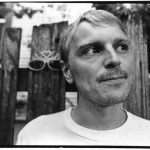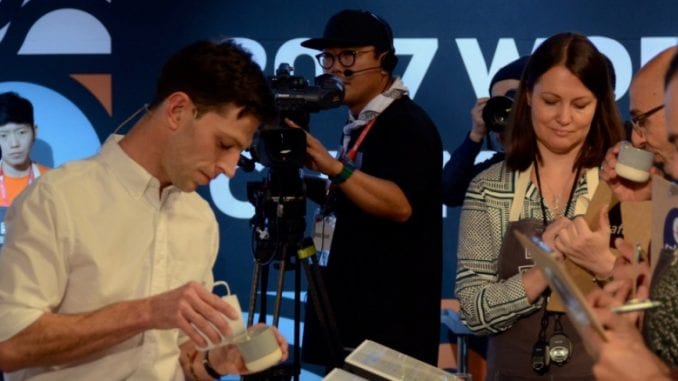
Dale Harris, the 2017 World Barista Champion, opens up about his coffee career and his journey as a longtime barista competitor in an exclusive two-part interview with Barista Magazine.
BY CHRIS RYAN
BARISTA MAGAZINE ONLINE
Earlier this month in Seoul, South Korea, baristas from 58 countries around the world battled for supremacy in the World Barista Championship. After four days of top-notch competition, Dale Harris—the National Barista Champion from the United Kingdom—was named the 2017 World Barista Champion.
We talked to Dale—a veteran barista competitor who serves as the director of wholesale for UK roaster Hasbean Coffee—about his competition history and his 2017 WBC experience. (Read part one of the interview here.) In today’s installment, Dale talks more about his WBC-winning routine and reflects on what winning the competition means to him.
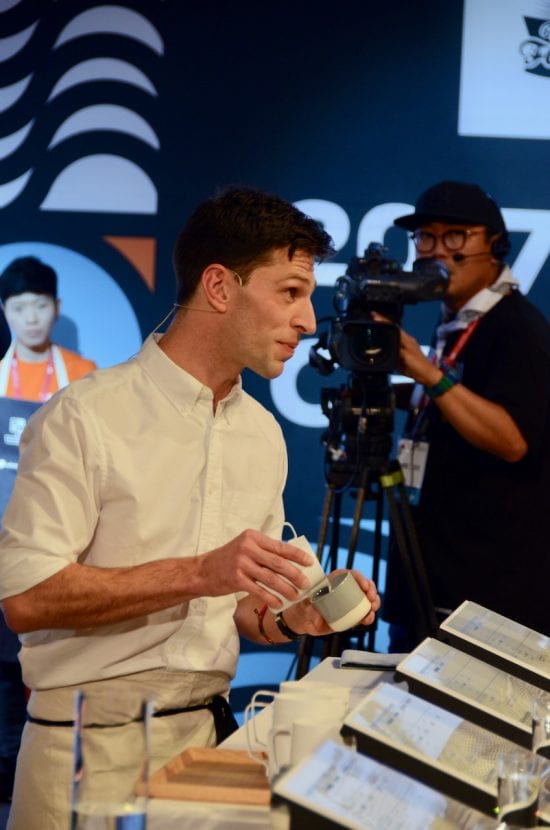
Chris Ryan: It seemed like you made a couple of unorthodox moves during your routine, such as asking the judges to look at the graphs instead of at you, and not revealing information about your coffee until the very end. Can you talk about those decisions, and whether you felt you were taking big risks?
Dale Harris: Part of what makes barista competitions exciting to me is playing with the structure that’s there and looking at ways we can bend those constraints to produce something novel and interesting. There are always risks in doing this, but I believed if I didn’t take risks, I would be failing to use the experience of competing to learn and grow as a barista, and that was one of the only goals I had total control over!
The most challenging risk we took was taking some time talking behind the machine, during which the judges would have no personal engagement. I was really adamant when we were first building the routine that I wouldn’t do this, as it goes against everything I feel is important as a barista, particularly in regards to customer service. As we refined the routine, though, we realized it allowed me to tell a stronger story, and when I returned to serve the judges face to face, that engagement was much higher as a result.
Incidentally, the judges told me afterward that they didn’t enjoy being told to look at the graphs for so long! But they also said they felt that, by the end, they’d received a presentation with a good deal of science, seed-to-cup knowledge, and solid customer service.
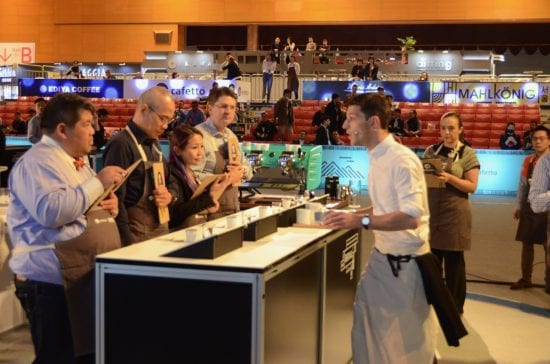
There were risks I wanted to take that didn’t make the cut. At the very beginning, I wanted to do a presentation in Spanish, tied to the communication challenges, shared reference points, and inherent bias throughout coffee. But if I’m honest, it became apparent that a presentation like this was beyond me very, very quickly!!!
CR: Can you tell me a bit more about your coffee? Do you think using an SL28 from El Salvador set you apart in a competition with so many Geishas from Panama and Ethiopia?
DH: The coffee I served was an SL28 from El Salvador, farmed by Ernesto Menendez as a part of his Wild Forest Project on Las Brumas. It was a super-high-quality coffee, but also one that was very distinctive that shone on the cupping table as something interesting to present. When we were selecting coffees, we began by blind cupping a small range that included a number of Geishas, Ethiopian coffees, and washed and natural Kenyans. But the flavors in this SL28 resonated with me more than anything else I tasted.
While I’m proud we achieved this success without using a Geisha—to me, their overuse represents many areas of “unsustainability” in specialty coffee—my decision to use this coffee wasn’t intended to be a statement, but was purely because I felt it was the right coffee for me to present to my judges.
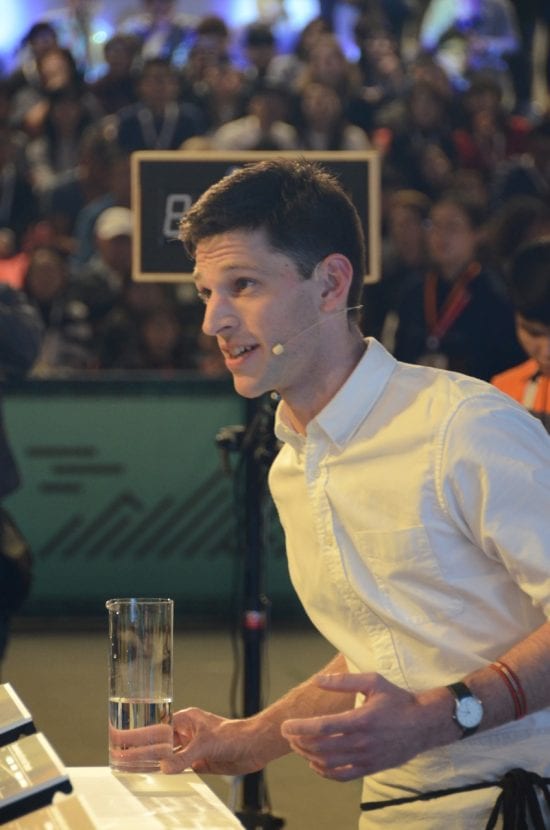
I feel that choice allowed it to stand out from a lot of exceptional coffees that had similar flavor notes to each other. But as with all facets of barista competition, the coffee chosen is just one small part of what ends up being scored. I also have to say that the shot of Geisha I tasted in the practice room, brewed by the Taiwanese competitor, Melody [Lu], was one of the best espressos I’ve ever tasted.
CR: How do you feel about being the global ambassador for specialty coffee? Do you have any initial messages or approach as World Barista Champion?
DH: Firstly, I feel honored to have the opportunity to talk about coffee to a wider audience, and I’m excited about the people I’ll meet and the lessons I’ll learn along the way. I’m going to wait and see how the year develops, but I think the messages and values I hope to project will be the same as they have been for the past 10 years: Great-tasting coffee is the result of hard work and intention from many individuals along a complex chain where each step contains opportunities to explore. I personally believe the more focus, resource, and value we can shift toward origin, the more we will all benefit. But the best place to present that case is by standing directly in front of customers showing them what’s possible in the cup.
CR: Finally, how did it feel to win the World Barista Championship?
DH: How does it feel to win? The only answer is “overwhelming”—the result was unexpected and, truthfully, could have gone to any of the other finalists. I’m still trying to process it all and have struggled to find a way to describe the feeling. But mostly, I am really happy that all of the sacrifice and hard work my team has put in for me on my behalf, over the past nine years of competing, has come to this.

